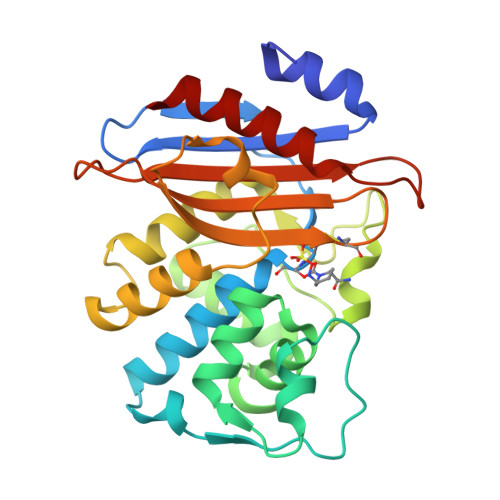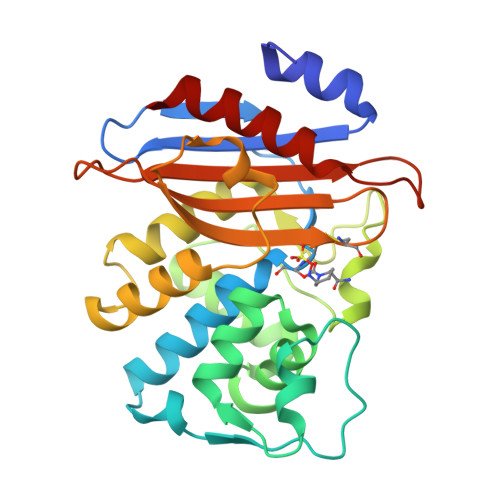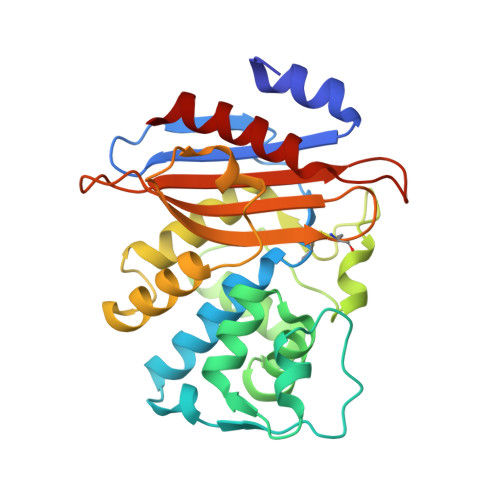Molecular Basis for the Potent Inhibition of the Emerging Carbapenemase VCC-1 by Avibactam.
Mangat, C.S., Vadlamani, G., Holicek, V., Chu, M., Larmour, V.L.C., Vocadlo, D.J., Mulvey, M.R., Mark, B.L.(2019) Antimicrob Agents Chemother 63
- PubMed: 30782990
- DOI: https://doi.org/10.1128/AAC.02112-18
- Primary Citation of Related Structures:
6MK6, 6MKQ - PubMed Abstract:
In 2016, we identified a new class A carbapenemase, VCC-1, in a nontoxigenic Vibrio cholerae strain that had been isolated from retail shrimp imported into Canada for human consumption. Shortly thereafter, seven additional VCC-1-producing V. cholerae isolates were recovered along the German coastline. These isolates appear to have acquired the VCC-1 gene ( bla VCC-1 ) independently from the Canadian isolate, suggesting that bla VCC-1 is mobile and widely distributed. VCC-1 hydrolyzes penicillins, cephalothin, aztreonam, and carbapenems and, like the broadly disseminated class A carbapenemase KPC-2, is only weakly inhibited by clavulanic acid or tazobactam. Although VCC-1 has yet to be observed in the clinic, its encroachment into aquaculture and other areas with human activity suggests that the enzyme may be emerging as a public health threat. To preemptively address this threat, we examined the structural and functional biology of VCC-1 against the FDA-approved non-β-lactam-based inhibitor avibactam. We found that avibactam restored the in vitro sensitivity of V. cholerae to meropenem, imipenem, and ertapenem. The acylation efficiency was lower for VCC-1 than for KPC-2 and akin to that of Pseudomonas aeruginosa PAO1 AmpC ( k 2 / K i = 3.0 × 10 3 M -1 s -1 ). The tertiary structure of VCC-1 is similar to that of KPC-2, and they bind avibactam similarly; however, our analyses suggest that VCC-1 may be unable to degrade avibactam, as has been found for KPC-2. Based on our prior genomics-based surveillance, we were able to target VCC-1 for detailed molecular studies to gain early insights that could be used to combat this carbapenemase in the future.
Organizational Affiliation:
National Microbiology Laboratory, Public Health Agency of Canada, Winnipeg, Manitoba, Canada.



















